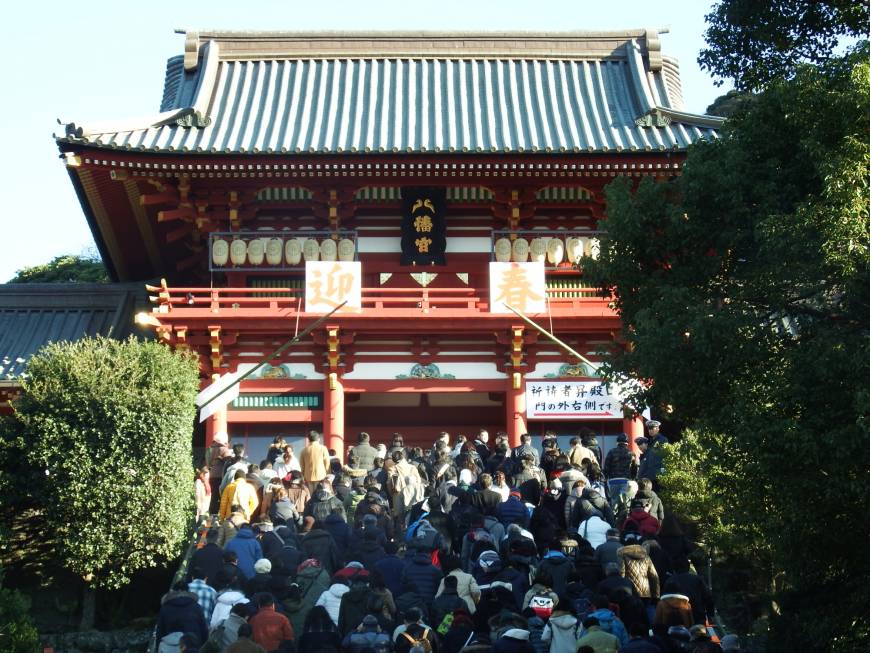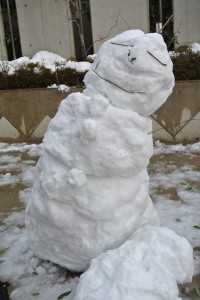
National
2017 rings in across Japan as shrine, temple throngs pray for good year
As people across Japan celebrated the turn of the year, they flocked to shrines and temples Sunday morning for their traditional hatsumode pilgrimage to make a fresh start on New Year’s Day.
Meaning “the first prayer of the year,” hatsumode witnesses hundred of thousands of wish-makers visiting Shinto shrines and Buddhist temples during the first three days of the year.
Major destinations, including shrines Meiji Jingu in Tokyo, Tsurugaoka Hachimangu in Kamakura, Kanagawa Prefecture, and Ise Jungu in Mie Prefecture, were crowded with visitors wishing to make a fresh start.
“I wished good health for all my family members,” a woman at Meiji Jingu was quoted as telling NHK. “And also wished my children would study hard.”
Immediately after the New Year’s countdown, people at the shrine started throwing saisen coin offerings into an area equivalent to 400 tatami mats. At major establishments, those monetary offerings amount to hundreds of millions of yen during the first three days of the new year.
In Kamakura, Tsurugaoka Hachimangu Shrine was also thronged with worshipers. Visited by roughly 2.5 million visitors every year during New Year’s, the shrine is the third-most popular in Kanagawa and the fifth-most visited in the Kanto region.
“I wished for all of my family members to stay healthy. I’ve lived my life considering good health as the priority, so I’d like to continue doing so,” said a 65 year-old housewife who provided her last name, Tanaka, as she visited Kamakura from nearby Chigasaki that day with her daughter.
“We usually visit the shrine near our house, but decided to come to Tsurugaoka Hachimangu this year because I’ll be turning 40 this year,” said the daughter, a dispatch worker, adding that the omikuji paper fortune she acquired at the shrine was not necessary good but waking up early for hatsumode made her feel refreshed.
Aika Miyaji, 15, and Ryotaro Okamoto, 16, a couple attending a junior-high school in Yokohama, said they are looking forward to attending the same high school starting in April.
“Our wish is passing the entrance exam,” said Okamoto, adding that it was his first hatsumode at Tsurugaoka Hachimangu accompanied by Miyaji, who visits the shrine every year. “The examination is in February,” said Miyaji. Okamoto added: “We’ve studied so hard for this.”
Tsurugaoka Hachimangu was established in 1063 by Minamoto Yoriyoshi (988-1075), and traces its origins to Yoriyoshi’s descendant, Minamoto Yoritomo (1147-1199). It is the geographical and cultural center of Kamakura, and is one of the most popular tourist spots in the city alongside the historic Hasedera Temple and Kotoku-in Temple, where the Great Buddha is located.
In Kumamoto, where massive earthquakes devastated many homes as well as the prefecture’s iconic Kumamoto Castle last April, people wished for a quick recovery for their homeland. “I wish this year will be a peaceful one,” a 69-year-old woman was quoted as telling the Asahi Shimbun at Aso Shrine in the city of Aso, one of the hardest-hit areas.
People also took in the New Year’s Day sunrise at the top of the Roppongi Hills highrise in central Tokyo. Thanks to the fine weather, the special viewing event ended in success, its organizer said.
Apart from traditional shrine and temple visits to celebrate the turn of the year, many younger generations joined New Year’s countdown events for more excitement.
In Tokyo’s bustling Shibuya district, the iconic scramble crossing in front of Shibuya Station became pedestrian-only between late Saturday night and early Sunday morning. It was the first experiment by Tokyo police for better crowd control, as every year the crossing had become extremely congested, raising the risk of accidents and other trouble.
*******************
For a personal account of a Hatsumode in the snow in 2015, please see here.

A participant at the 2015 hatsumode

Leave a Reply